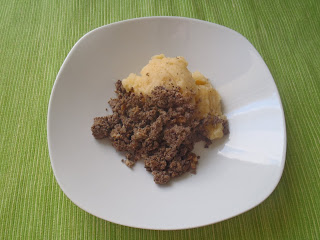...I have drugg'd their possets
That death and nature do contend about them
Whether they live or die.
-Lady MacBeth, in the Scottish play (fitting, no?)
 Posset is an old British drink of cream curdled with sack (fortified wine) or ale.
Posset is an old British drink of cream curdled with sack (fortified wine) or ale.Nowadays the term usually refers to sweetened cream curdled so that it sets like a custard.
During the years in which liquid posset was declining in popularity and solid posset was rising, the term "posset" on its own was ambiguous. Qualifiers were added for clarity, resulting in terms like "rich eating posset."
Anyways, eating-posset is one of the simplest desserts to make.
Lemon Posset
From Bon Appétit Magazine, May 2007
- 2 1/4 cups heavy cream
- 3/4 cup sugar
- 3 tbsp fresh lemon juice
- 2 tbsp fresh lime juice
Shortbread

Adapted from a recipe of the same name in the Culinary Institute of America's Baking and Pastry, Second Edition.
Many would not consider this cookie a shortbread, as shortbread is usually virginal white. I happen to like the molasses and bran flavours of this (pardon the pun...) "less refined" version. These cookies are very crisp, and lack the powdery mouthfeel of some shortbreads.
- 8oz cake flour
- 8oz whole wheat flour
- pinch of salt
- 11oz butter
- 5oz white sugar
- 8oz brown sugar
Roll the dough to 1/4" thickness. Cut into desired shapes, then transfer to a heavy sheet pan covered in parchment. Refrigerate the pan for thirty minutes before baking at 350°F until the edges of the cookies are a light golden colour, roughly twenty minutes.
At the Burns Supper, these shortbread cookies were served on top of the eating-posset, with one end hanging over the bowl. The idea was to dip the cookies in the posset à la Dunkaroos.


















